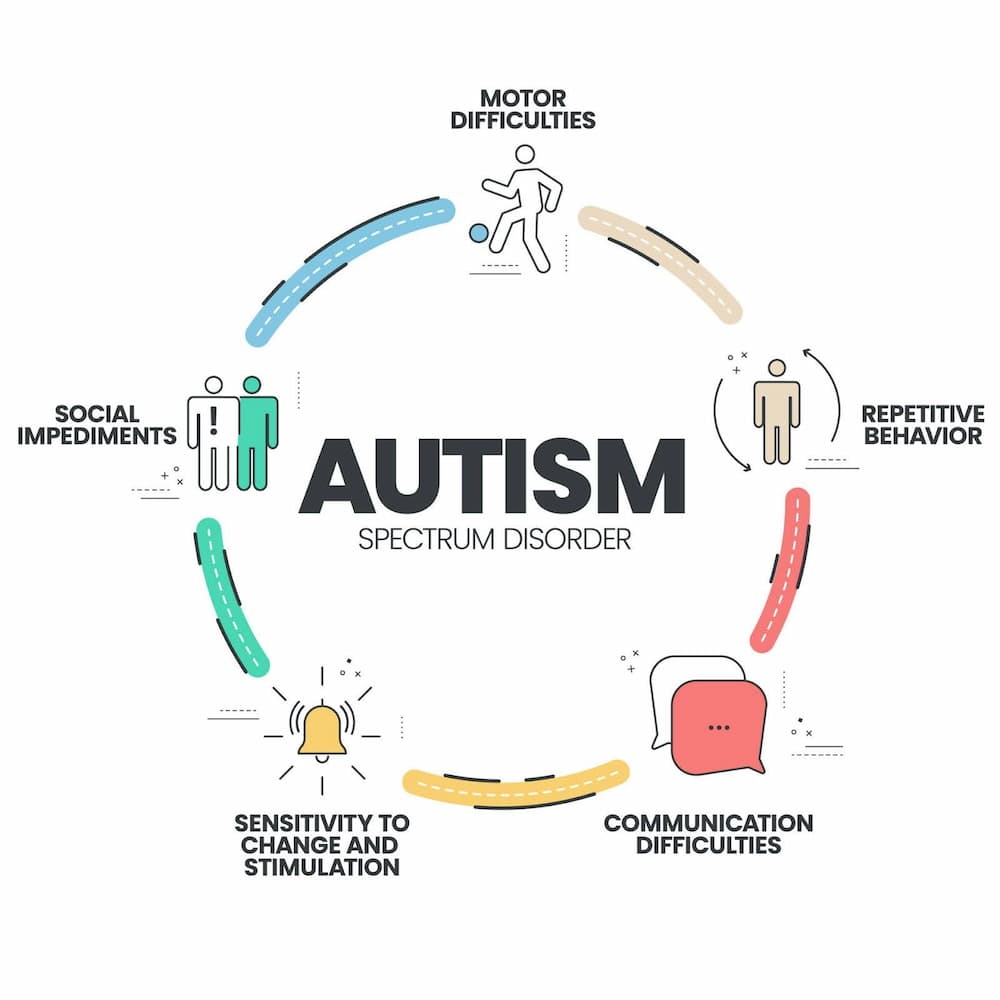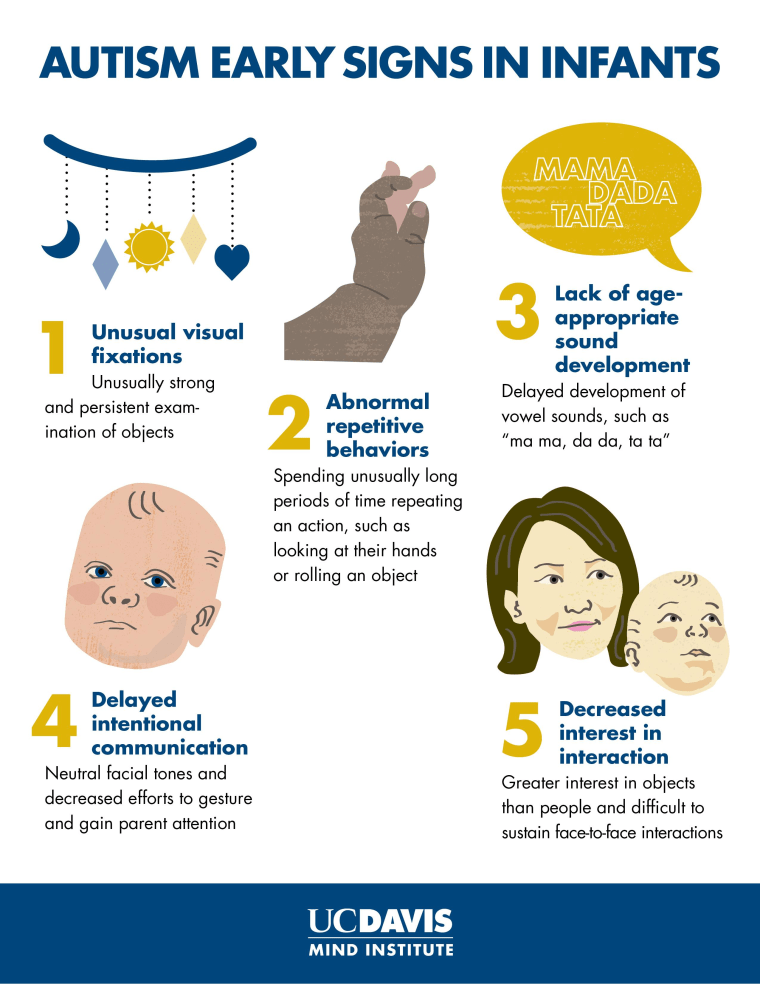Managing transitions using Autism Behavioral Therapy
Managing transitions using Autism Behavioral Therapy
Blog Article
Promoting Inclusivity: Just How to Produce Supportive Settings for Those With Behavior Autism
Creating encouraging environments for people with behavioral autism is necessary for fostering inclusivity. What certain steps can you take to ensure these people flourish in different setups?
Comprehending Behavior Autism: Trick Qualities and Obstacles
Comprehending behavior autism involves identifying its essential features and the difficulties it presents. Individuals with autism usually display difficulties in social communication, interaction, and repetitive actions. You could notice that they have a hard time to translate social signs, which can bring about misconceptions in day-to-day situations. Sensory sensitivities are also typical, making specific settings frustrating.

Supporting someone with behavior autism suggests holding your horses and adaptable. You'll need to create a setting that lessens anxiety and promotes convenience. Acquainted routines can help, along with clear, regular communication. Understanding these features will certainly lead the way for a lot more efficient support and an extra inclusive setting.
The Role of Empathy in Sustaining Individuals With Autism
Empathy plays an important role in sustaining individuals with autism by aiding you comprehend their distinct perspectives. By exercising energetic paying attention methods, you can develop emotional links that cultivate trust fund and interaction - Autism Behavioral Therapy. This understanding not just enhances your connection however likewise develops a much more supportive environment for them
Comprehending One-of-a-kind Perspectives
When you think about the distinct point of views of individuals with autism, it becomes clear how vital empathy is in giving effective support. Your capability to understand enables you to produce an environment where they feel risk-free, valued, and understood. This encouraging ambience encourages individuals with autism to express themselves, inevitably enhancing their well-being and growth.

Active Listening Strategies
Energetic paying attention strategies play a crucial duty in supporting individuals with autism, as they cultivate a much deeper link and understanding. You reveal that you value their sensations and thoughts when you involve in active listening. Maintain eye call, nod, and utilize verbal affirmations to signify your attentiveness. Paraphrase what they state to confirm your understanding, and ask flexible concerns to urge additional expression. Avoid disrupting, enabling them to express their points totally. Be mindful of your body language; it must be open and welcoming. By exercising these techniques, you develop a safe room where individuals really feel heard and appreciated, ultimately improving their communication and emotional health. Empathy beams with when you proactively listen, reinforcing your connection with them.
Building Emotional Connections
Producing a helpful setting through active paying attention naturally results in constructing psychological connections with people on the autism spectrum. When you genuinely involve, you're not just hearing their words; you're recognizing their feelings. This empathy cultivates trust, allowing them to reveal themselves freely. Usage nonverbal signs, like eye contact and nodding, to show you exist and bought their experiences.

Efficient Interaction Techniques for Inclusivity
Effective interaction strategies play an essential duty in fostering inclusivity for individuals with behavior autism. Beginning by making use of clear, straightforward language that's very easy to understand.
Nonverbal hints are just as crucial. Take notice of your body movement, facial expressions, and tone of voice, as these can communicate greater than words. Preserve eye call and usage gestures to boost understanding.
In addition, be client and offer people time to process details. Encourage them to share their feelings and ideas, revealing that their input is valued.
Active listening is important; repeat or reword what they've claimed to verify understanding. Adjust your interaction methods based on individual choices, whether it's with aesthetic aids, composed directions, or various other tools. This personal touch reinforces inclusion and helps construct meaningful links.
Customizing Assistance Solutions in Educational Setups
In academic settings, you'll want to concentrate on Individualized Education and learning Program (IEPs) that satisfy each student's distinct demands. Developing a sensory-friendly classroom style can additionally enhance learning by minimizing distractions and advertising comfort. Together, these techniques can promote an environment where trainees with autism grow.
Individualized Education And Learning Strategies
While steering through the complexities of autism in academic settings, Individualized Education and learning Plans (IEPs) play a vital function in customizing assistance systems to fulfill each student's one-of-a-kind needs. It's essential to team up with educators, professionals, and your child to create a complete plan. Keep in mind, an efficient IEP is not simply a record; it's a living tool that adapts to your youngster's developing demands, ensuring they prosper in their educational setting.
Sensory-Friendly Classroom Layout
Developing a sensory-friendly class can substantially boost the learning experience for students with autism. Usage calming shades on walls and style to create a comforting atmosphere. By making these modifications, you'll produce an environment where students with autism really feel a lot more supported and engaged in their learning trip.
Developing Inclusive Workplaces for People With Autism
To promote an absolutely comprehensive office for individuals with autism, companies have to acknowledge the distinct toughness and difficulties these people bring. Beginning by promoting clear interaction and supplying detailed work summaries that outline expectations. This aids individuals comprehend their duties far better and lowers anxiousness.
Take into consideration implementing flexible i thought about this work setups, such as go to these guys remote work or readjusted hours, to accommodate various individual preferences and sensory needs. Training your staff on autism awareness is essential; it can boost compassion and promote a helpful ambience.
Creating silent rooms where staff members can recharge during difficult minutes can additionally make a considerable distinction. Encourage the use of assistive technologies that assist streamline jobs and boost performance.
Ultimately, valuing variety will certainly not just profit individuals with autism however will certainly additionally improve the whole team, bring about a much more innovative and dynamic work environment. Embrace these strategies to grow a setting where everybody can flourish.
Encouraging Social Communication and Area Interaction
Motivating social communication and neighborhood interaction is necessary for individuals with autism, as it helps build self-confidence and fosters purposeful relationships. To develop a helpful atmosphere, beginning by providing chances for people to attach with others in a comfortable setup. Arrange team activities that deal with various rate of interests, such as art courses, sporting activities, or area service projects.
You can also promote smaller sized, structured celebrations where everyone can share their thoughts and experiences. Encourage open interaction by modeling respectful listening and empathy. Developing peer mentorship programs can aid produce bonds and offer support.
Entail families and regional companies to widen the assistance network and promote comprehensive events. Bear in mind, the trick is to create secure spaces where people with autism really feel valued and recognized. By fostering these connections, you'll help them flourish socially and establish a sense of belonging within the neighborhood.
Resources and Equipments for Structure Helpful Settings
While structure supportive atmospheres for people with autism might seem difficult, several sources and devices can make the procedure less complicated and more effective. Initially, consider utilizing aesthetic assistances like routines or social tales to assist people recognize their everyday routines click here for more info and social circumstances. Applications made for interaction, such as AAC (Augmentative and Alternative Interaction) tools, can likewise boost communication.
Additionally, training programs for team and volunteers on autism recognition can advertise empathy and understanding in your area. Check out regional organizations that provide workshops or resources tailored for supporting people with autism.
Developing sensory-friendly spaces with calming elements-- like soft lighting and silent areas-- can benefit those who could become overwhelmed. Developing connections with neighborhood assistance groups can give continuous guidance and feedback, helping you fine-tune your method and guarantee inclusivity for all.
Often Asked Concerns
How Can I Educate Others Regarding Behavioral Autism Effectively?
To inform others about behavior autism successfully, share individual tales, give clear sources, and encourage seminars - Aba Therapist Near Me. Use relatable instances and highlight the relevance of understanding various viewpoints to cultivate empathy and recognition
What Are Common Misconceptions Concerning Autism That Required Addressing?
You may assume autism just affects interaction skills, but that's simply one facet. Lots of think it's exclusively a youth condition, when as a matter of fact, it spans across all ages and manifests in a different way for every individual.
How Can I Promote for Autism Awareness in My Area?
You can promote for autism understanding by organizing area occasions, sharing insightful resources, and working together with local companies. Usage social media to spread the word, and encourage open conversations to promote understanding and approval.
Exist Specific Sensory-Friendly Spaces for Individuals With Autism?
Yes, many communities use sensory-friendly spaces, like peaceful areas in libraries, specialized play locations, or assigned hours at museums. You can discover neighborhood resources and supporter for even more inclusive rooms to sustain individuals needing them.
What Duty Do Household Members Play in Supporting People With Autism?
Household members play a vital role in sustaining people with autism. You can give persistence, support, and understanding. By proactively joining their lives, you help build confidence and foster independence, creating a nurturing setting.
Developing encouraging settings for people with behavior autism is crucial for cultivating inclusivity.Developing a helpful atmosphere with active listening normally leads to constructing psychological connections with individuals on the autism spectrum. Developing Inclusive Workplaces for People With Autism.
To promote a really inclusive workplace for people with autism, companies should recognize the unique toughness and difficulties these individuals bring. Remember, the trick is to produce risk-free spaces where people with autism really feel valued and understood.
Report this page